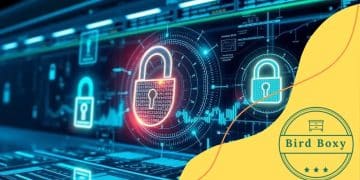Remote exams security issues: What you need to know

Remote exams security issues involve risks such as cheating and identity verification challenges, but integrating technologies like AI, biometric systems, and secure proctoring can significantly enhance the integrity of online assessments.
Remote exams security issues have become a hot topic as online assessments gain popularity. Have you ever wondered how universities protect against cheating? Let’s dive into the concerns and solutions.
Understanding remote exams and their rise
The rise of remote exams is changing the landscape of education. As technology advances, more institutions are adopting online assessments to meet the needs of students everywhere. Remote exams offer flexibility and convenience, allowing students to take tests from the comfort of their homes. But what exactly does this mean for education?
Key Factors Driving the Adoption of Remote Exams
Several factors contribute to the increasing popularity of remote exams:
- The need for flexibility in scheduling exams.
- The ability to reach a larger and more diverse student population.
- Technological advancements that simplify the online testing process.
- The impact of global events, such as the COVID-19 pandemic, that accelerated the shift to online learning.
As we consider these factors, it’s clear that remote exams are here to stay. The transition to online assessments has brought about significant changes in how educators evaluate students. Overall, the convenience and accessibility of remote exams continue to attract both educators and students alike.
Challenges Associated with Remote Exams
While the benefits are noteworthy, it’s important to acknowledge the challenges that come with remote exams. Issues such as security and academic integrity arise, necessitating robust solutions to ensure that assessments remain fair and valid. Institutions are actively exploring various strategies to combat cheating and maintain the credibility of their exams.
Ultimately, understanding remote exams and their rise is crucial for both students and educators. By recognizing the benefits and challenges, institutions can better prepare for the future of online assessments, ensuring a smoother experience for all stakeholders involved.
Key security risks in online assessments
As online assessments become more common, understanding the key security risks associated with them is essential. Many students and institutions rely on remote exams, but they also face several challenges related to exam integrity.
Common Security Threats
Some threats that arise in online assessments include:
- Cheating and dishonesty: With no physical supervision, it can be easier for students to access unauthorized materials.
- Identity verification issues: Ensuring that the person taking the exam is indeed the registered student can be challenging.
- Technical vulnerabilities: Hackers may exploit software weaknesses to gain access to exam data or disrupt testing.
- Data privacy concerns: Protecting sensitive information of students and their results is critical.
Addressing these risks requires implementing effective measures. Institutions are exploring various methods to ensure the security of online assessments. Utilizing technology, such as remote proctoring software, can help increase monitoring during exams. This also provides identity verification to ensure that the right student is taking the test.
Technological Solutions to Mitigate Risks
Institutions are leveraging technology to combat security issues. Some approaches include:
- Proctoring software: Programs that monitor students during exams through webcams can deter cheating.
- Secure browsers: Lockdown browsers restrict access to other websites during assessments, keeping students focused.
- Question randomization: Randomizing question order and answer choices can prevent students from sharing answers.
By recognizing the specific security risks in online assessments, educators can create safer testing environments. Continuous evaluation and adaptation of security measures are crucial as technology and tactics evolve, ensuring that the integrity of assessments is maintained.
Best practices for ensuring exam integrity

To maintain the integrity of online assessments, understanding the best practices for ensuring exam integrity is vital. Implementing effective measures helps create a fair testing environment for all students.
Establishing Clear Guidelines
First, it is important to communicate clear rules and expectations for online exams. Students should know the protocols for taking the exam, including what materials are allowed and the consequences of dishonesty. Educators can provide a detailed guide outlining the exam process, which promotes understanding and adherence to policies.
Utilizing Proctoring Solutions
Employing remote proctoring solutions can significantly enhance exam integrity. These technologies monitor students during assessments, helping to prevent cheating. Some key features of proctoring software include:
- Webcam monitoring: Live audio and video feeds track student behavior during the exam.
- Screen recording: Capturing screen activity to ensure that students are not accessing unauthorized resources.
- Identity verification: Using facial recognition to confirm the identity of the student taking the exam.
In addition to technology, ensuring a reliable internet connection is important. A consistent connection reduces the likelihood of students attempting to cheat or share test content with others.
Randomizing Exam Questions
Another effective strategy is to randomize exam questions and answers. By doing this, each student receives a unique set of questions, making it difficult for them to share answers. This tactic encourages individual thinking and reduces the chances of collusion.
Moreover, educators can provide comprehensive feedback after exams to promote learning and improvement. This practice reassures students that assessments are designed for their growth, not just for evaluation. By focusing on understanding rather than mere scores, institutions can foster a culture of honesty and integrity in online assessments.
Technological solutions to enhance security
Implementing technological solutions is key to enhancing security in online assessments. By leveraging advanced tools, institutions can bolster the integrity of their exams and protect sensitive student data.
Utilizing Secure Browsers
One effective way to enhance security is by using secure browsers. These specialized browsers restrict students from accessing unauthorized websites during an exam. They provide a controlled environment, limiting distractions and potential cheating. Students are unable to navigate away from the test, which helps maintain focus.
AI-Powered Monitoring Tools
Another cutting-edge solution is AI-powered monitoring tools. These tools analyze student behavior during exams, flagging any suspicious activity. Some benefits of these systems include:
- Real-time alerts: Sending immediate notifications to proctors if unusual behavior is detected.
- Face recognition: Ensuring the identity of the test-taker matches the enrolled student.
- Behavior analysis: Identifying patterns that may indicate cheating, such as looking away from the screen frequently.
By using AI, institutions can respond quickly to potential threats, ensuring a secure testing environment.
Remote Proctoring Services
Remote proctoring services offer live human supervision during exams. These services provide additional security measures, allowing proctors to monitor students in real-time via webcams. Many of these services provide features such as:
- Identity verification: Checking IDs before the exam begins.
- Video recording: Capturing the entire exam session for later review if needed.
- Environment checks: Ensuring that students do not have unauthorized materials nearby.
Implementing these technological solutions not only enhances the security of online assessments but also fosters a culture of trust and integrity. By combining various tools, institutions can create a robust defense against cheating and ensure fair evaluations for all students.
Future trends in remote exam security
The landscape of remote exam security is continually evolving. As technology advances, several future trends are likely to shape the way secure exams are conducted.
Increased Use of Artificial Intelligence
One significant trend is the increased use of artificial intelligence in monitoring assessments. AI can analyze vast amounts of data to detect patterns of cheating, making it a crucial tool for educators. Additionally, AI algorithms can improve the accuracy of identity verification, ensuring that the student registered is the one taking the exam.
Enhancements in Biometrics
Another notable trend is the growing adoption of biometric security measures. Technologies such as fingerprint scanning and facial recognition are becoming more accessible. These methods provide additional layers of security by confirming a student’s identity before they take an exam. Biometric solutions are not only secure but also convenient for test-takers.
Blockchain Technology for Data Security
Blockchain technology may also play a role in the future of remote exam security. With its decentralized nature, blockchain can securely store assessment data and reduce the risk of tampering. Students’ results can be verified easily, which enhances trust in the grading process. As educational institutions explore blockchain, we may see a shift towards more secure record-keeping.
Growing Focus on Cybersecurity Training
As cyber threats become more sophisticated, there will be an increased focus on cybersecurity training for both students and educators. This training will help all parties understand the risks associated with remote assessments and the best practices for minimizing them. By fostering a culture of security awareness, institutions can better prepare for potential threats.
Finally, collaboration among educational institutions, technology providers, and regulatory bodies will likely grow to address emerging challenges in remote exam security. Together, they can develop guidelines and standards that enhance security while ensuring a positive testing experience. By keeping an eye on these trends, we can shape a safer future for remote assessments.
FAQ – Frequently Asked Questions about Remote Exam Security
What are the key technologies improving remote exam security?
Key technologies include artificial intelligence for monitoring, biometric systems for identity verification, and blockchain for secure data storage.
How can remote proctoring software enhance exam integrity?
Remote proctoring software monitors students in real-time, ensuring they follow guidelines and do not access unauthorized materials.
Why is cybersecurity training important for students and educators?
Cybersecurity training helps both students and educators understand risks and best practices, creating a safer exam environment.
What role do collaboration and partnerships play in exam security?
Collaboration between educational institutions and technology providers ensures the development of effective security measures and guidelines.






